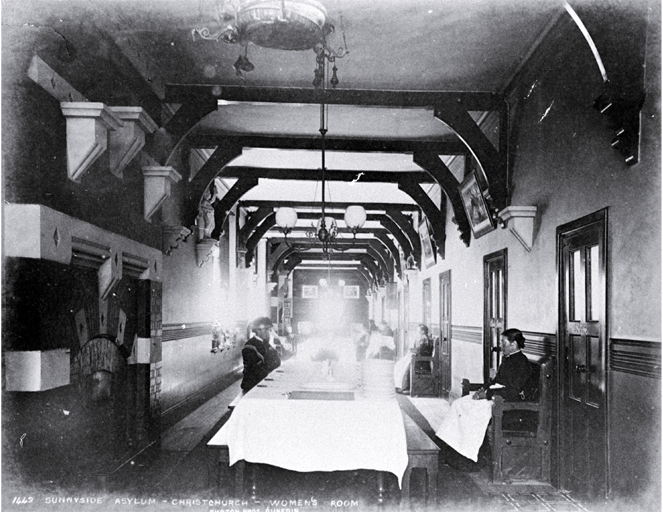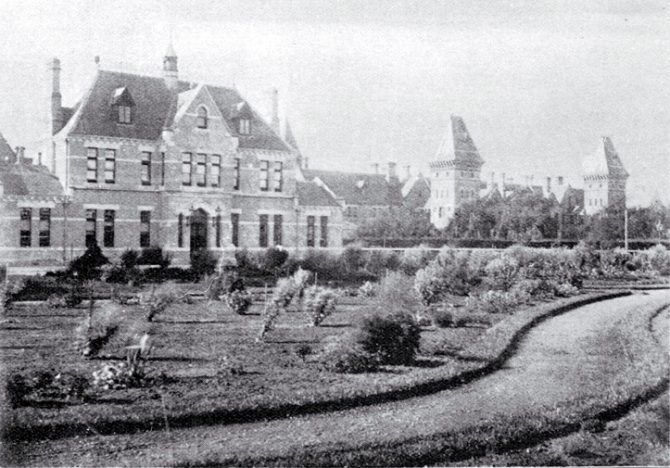Sunnyside Hospital, Christchurch’s first mental asylum, was opened in 1863. It was built to house those who were considered insane, until then held at Lyttelton jail. The hospital was closed in 1999 and demolition began on its last building in late April 2007, to make way for a Ngāi Tahu housing development.
Sunnyside’s main buildings were constructed in the 1870s from designs by Benjamin Mountfort, one of New Zealand’s leading Victorian Gothic architects. The John Campbell-designed administration building (pictured below), the last to be demolished, was added in 1892. Campbell was a notable government architect whose work also included Wellington’s Government house and the 1922 Parliament building, as well as the Auckland Chief Post Office (now Britomart). The administration building was one of only three of his buildings remaining in Christchurch.
New Zealand Historic Places Trust described the administration building:
“with an area of parkland, gardens and a fountain at its frontage, was the public entrance for the Sunnyside Hospital from 1892 to 1999. It set an indelible memory of the institution in the minds of the thousands of patients, their families and friends who spent time in the complex. It is of outstanding significance as a unique remnant of a Victorian 'Lunatic Asylum', designed in the Gothic style.”
“The two and a half storeyed masonry building makes a significant architectural statement. It features a symmetrically ordered central block topped by a steep hipped roof with the final flourish of a decorative ventilator flêche. There are minor Gothic details which linked it in style to the earlier buildings.”
The demise of the hospital’s last building prompted an outcry from members of the community concerned about the continued destruction of Canterbury’s heritage buildings. The Press reported that,
“the building was the last significant remainder of Canterbury's colonial health system a system fundamental to the success of the settlement and a solace to people cut off from the medical supports they had known in their homeland. That alone made the building worth saving. So did its beauty… Now that it is gone, our stock is depleted and our reputation as a heritage city damaged.”
More information
- Seager, M., Edward William Seager, pioneer of mental health is a history of the first years of Sunnyside and its first superintendent.
- Records which relate to the establishment and administration of Sunnyside in the 1860s and 1870s are in the Canterbury Provincial Government archives at Archives New Zealand, Christchurch.
- Archives New Zealand holds registers of admission, death registers, casebooks from 1854-1956.
- Exciting plan for old hospital Christchurch City Council article, May 2001.
Related pages
- Our family history page on Christchurch hospitals, orphanages and charitable aid.
- Benjamin Mountfort and the Gothic Revival.




